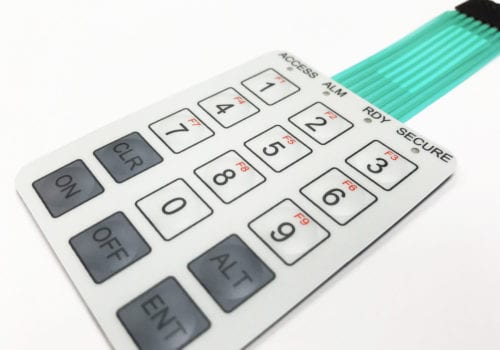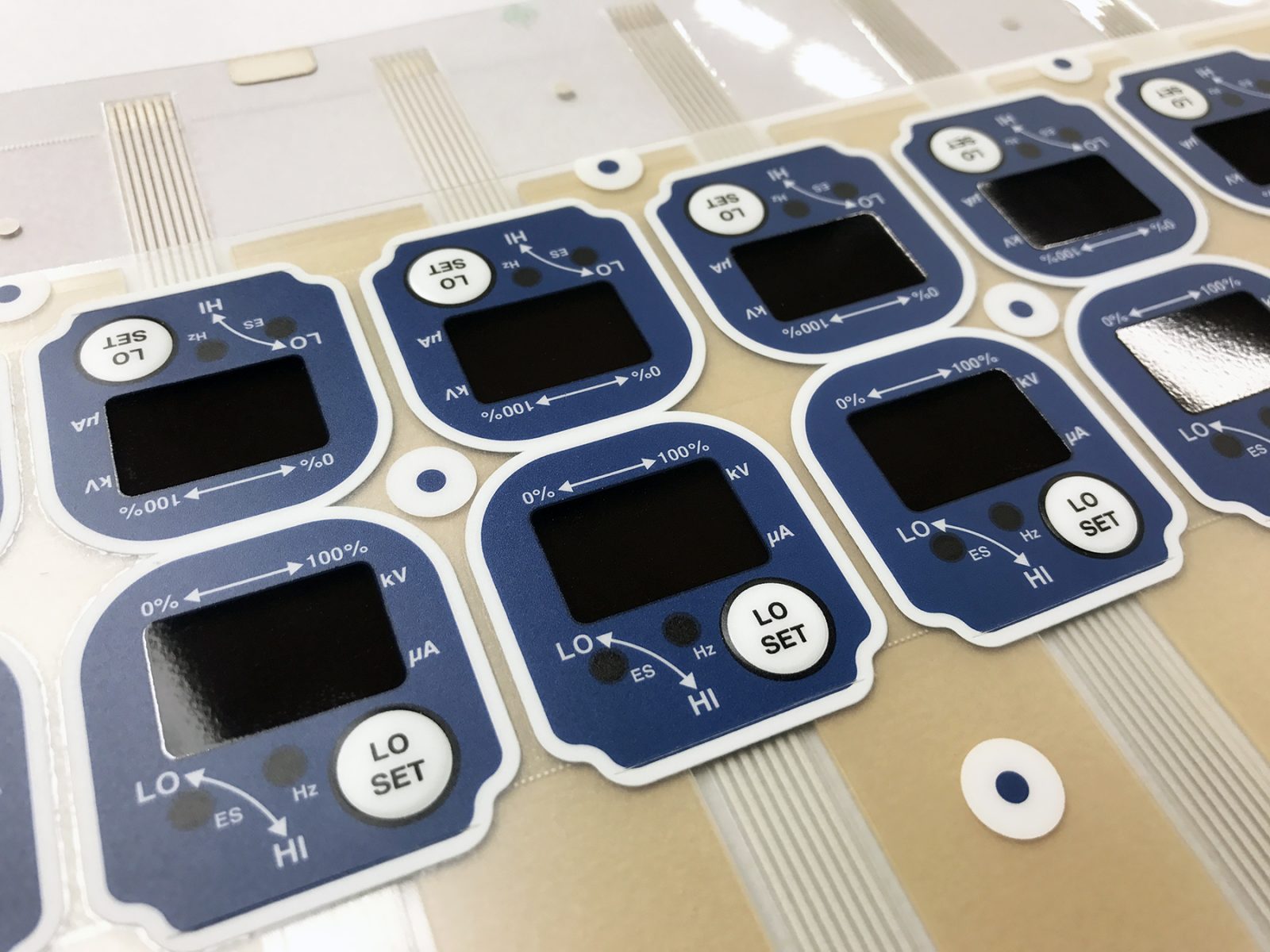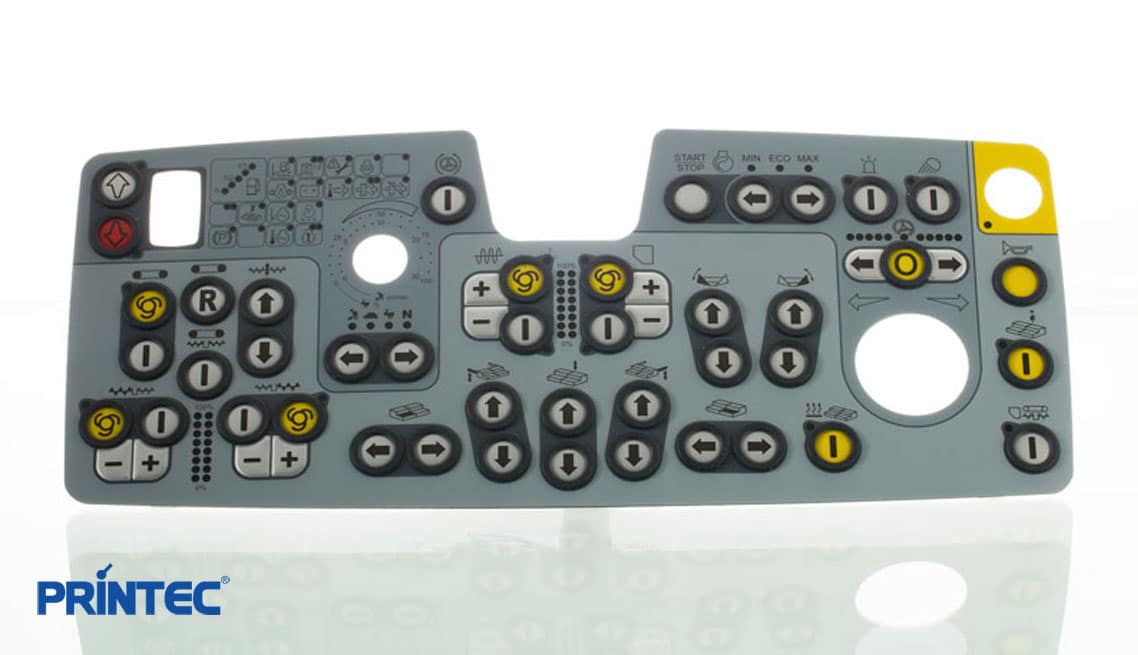If longevity matters, sourcing from a reliable membrane switch manufacturer is key.
If longevity matters, sourcing from a reliable membrane switch manufacturer is key.
Blog Article
All Regarding Membrane Layer Change: Comprehending Its Style and Performance
When you think of the control user interfaces in contemporary tools, membrane switches commonly come to mind. These parts are greater than just switches; they blend design and performance seamlessly. Recognizing just how they function and what makes them effective can change your point of view on daily electronics. There are nuances to their style and efficiency that you might not be aware of. Let's discover what sets membrane layer switches over besides other control systems.
What Are Membrane Switches?

Their smooth nature makes them simple to clean and immune to dust and dampness, a vital attribute in numerous atmospheres. Membrane layer buttons can likewise be customized relating to shape, dimension, and graphics, permitting suppliers to develop unique user interfaces customized to details products. And also, they're lightweight and slim, which assists in minimizing the total bulk of devices. Overall, membrane layer buttons play a considerable role in enhancing user experience throughout a broad variety of applications.
Just How Membrane Changes Work
When you push a trick on a membrane layer switch, it triggers a simple yet effective system. membrane switch manufacturer. The leading layer, commonly made of versatile product, pushes down onto a conductive layer beneath it.
You'll notice that the tactile comments varies based on the button style, supplying either a soft click or a much more pronounced reaction. As soon as you release the secret, the membrane layer returns to its initial position, reopening the circuit and quiting the signal. This process takes place virtually immediately, ensuring a receptive individual experience.
Membrane layer buttons are prominent because of their toughness and resistance to dust and wetness, making them excellent for different applications, from household appliances to medical devices. Understanding this procedure helps you value their prevalent use.
Key Elements of Membrane Switches
Understanding the key parts of membrane buttons is basic for understanding their capability and style. At the core, you'll find the graphic overlay, which gives the aesthetic interface for customers. Beneath that, there's a spacer layer that divides the circuit layers, making sure that they don't make call until pressed. The circuit layer is where the magic occurs; it contains conductive traces that complete the circuit when you push the switch. One more necessary aspect is the adhesive support, allowing the switch to adhere to surface areas firmly. The safety layer guards versus ecological aspects and use, prolonging the button's life-span. Each component plays a significant function in making sure trustworthy performance and user communication. By recognizing these elements, you'll acquire insight into how membrane changes operate and their importance in different applications.
Products Made Use Of in Membrane Layer Change Layout
The performance and durability of membrane changes greatly depend on the materials made use of in their style. You usually browse around this site run into polyester and polycarbonate as key substrates because of their outstanding stamina and adaptability. These products stand up to scrapes and chemicals, making them optimal for requiring settings.
The conductive layers frequently make use of silver or carbon, picked for their reliability and conductivity. membrane switch manufacturer. Silver offers remarkable efficiency, while carbon is an affordable option. For the overlay, you may consider a matte or glossy surface, relying on your visual requirements and customer experience
Make specific to select adhesives that hold up against ecological factors like temperature and humidity. Picking the best products will guarantee your membrane layer switch stands the examination of time.
Layout Factors To Consider for Membrane Buttons
While making membrane switches, it's essential to consider various elements that influence their functionality and individual experience. Begin by focusing on the layout and button dimension; ensure they're intuitive and very easy to navigate. Consider the tactile comments you wish to provide-- will customers need a noticeable click or a softer touch? Furthermore, think of the products you'll use, as they'll influence longevity and aesthetics.
Confirm your design accommodates ecological elements, like dampness or temperature variations, which can influence performance. By very carefully thinking about these elements, you'll produce a membrane button that enhances usability and satisfaction.
Applications of Membrane Buttons
Membrane buttons are versatile components discovered in numerous applications, from commercial devices to consumer electronics. You'll see their effect in machines that need resilient interfaces and in gadgets that gain from streamlined styles. Understanding these applications helps you value the performance and usefulness of membrane layer buttons in everyday modern technology.
Industrial Tools Usage
When you're you could try this out looking to improve the performance of commercial tools, membrane switches offer a reputable service that incorporates toughness see post with user-friendly layout. These switches are best for extreme settings, giving resistance to dust, moisture, and chemicals. Accept membrane buttons to enhance your operations and improve total efficiency.
Consumer Electronic Devices Combination
In the domain of consumer electronic devices, membrane switches play a vital duty in enhancing individual communication and tool capability. You'll locate them in gadgets like microwaves, push-button controls, and pc gaming consoles, offering a smooth means to communicate with technology. Their streamlined style enables for very easy assimilation right into different products, making controls user-friendly and straightforward. With their ability to include graphics and backlighting, you can appreciate a modern aesthetic that matches the device's overall appearance. Membrane switches additionally guarantee toughness and resistance to dust and moisture, extending the life-span of your electronic devices. By selecting membrane layer buttons, you boost not just the performance but likewise the design of your gadgets, making everyday communications smooth and pleasurable.
Benefits and Negative Aspects of Membrane Switches
While membrane switches supply a variety of advantages, they likewise come with some drawbacks that you should take into consideration. One considerable benefit is their compact layout, making them ideal for space-constrained applications.

Membrane layer switches can have a shorter life expectancy contrasted to mechanical switches, especially under hefty use. They can also be less responsive, which could impact individual feedback during procedure. Balancing these pros and cons will certainly aid you figure out if membrane switches are the right fit for your project.
Often Asked Inquiries
For How Long Do Membrane Changes Typically Last?
Membrane layer changes typically last between 5 to one decade, depending on usage and ecological problems. You'll wish to assess elements like wear, direct exposure to dampness, and temperature level variations to gauge their longevity successfully.
Can Membrane Layer Switches Be Customized for Particular Styles?
Yes, you can customize membrane layer switches to fit particular layouts (membrane switch manufacturer). You'll have the freedom to pick shades, shapes, and formats that match your task's needs, ensuring they blend seamlessly with your overall visual
What Is the Cost Variety for Membrane Layer Switch Manufacturing?
The expense variety for membrane layer button production normally drops between $1 and $10 per system, depending upon variables like layout complexity, quantity, and products. You can get quotes from producers to discover the most effective choice.

Are Membrane Switches Water Resistant or Resistant?
Membrane buttons can be created to be water resistant or immune, depending upon materials made use of and building techniques. If you require them for damp environments, guarantee you specify those needs throughout the style procedure.
How Do Membrane Layer Changes Contrast to Typical Switches?
Membrane layer switches are generally thinner and a lot more adaptable than standard switches, providing a smooth layout. They're commonly simpler to cleanse and integrate, yet may not provide the responsive feedback you're made use of to with mechanical alternatives.
Final thought

Report this page